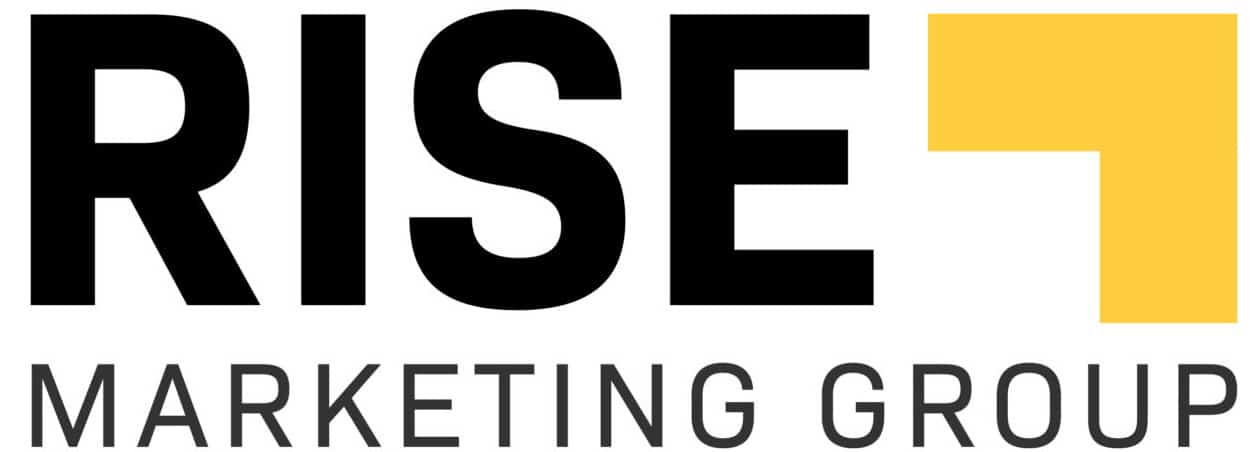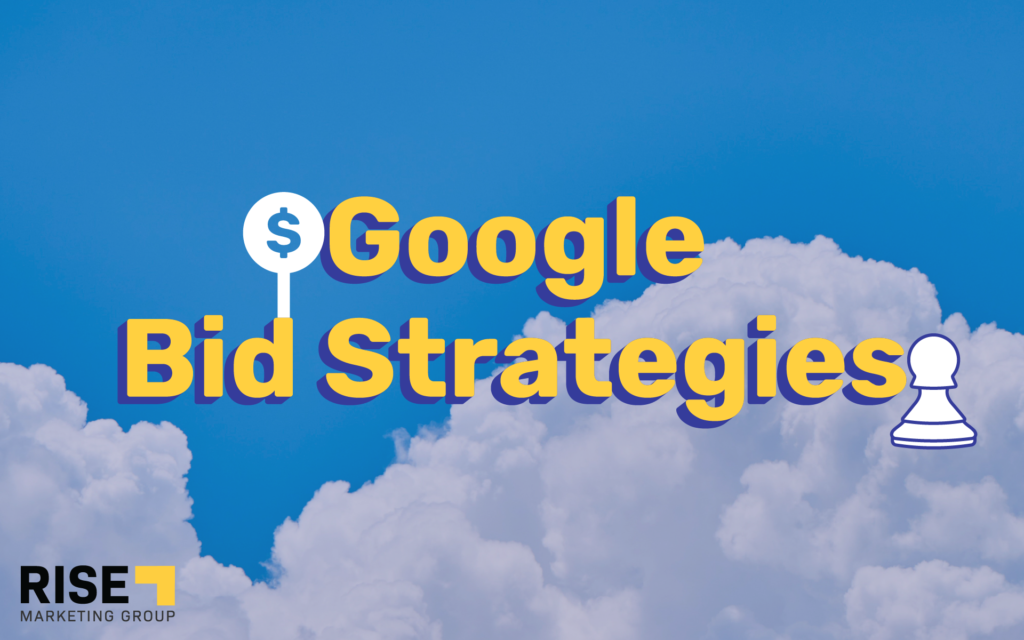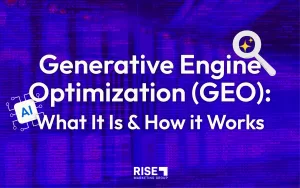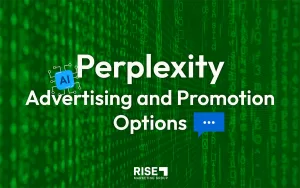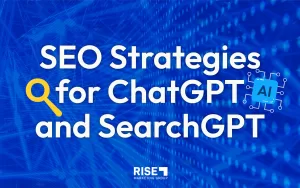Whether you’re already running Google Ads Campaigns or you want to start advertising your products, here’s a guide on how to build bidding strategies in order to make your advertising campaigns perform as you expect.
Google offers a number of bidding strategies when it comes to E-Commerce. Your choice will depend on your business structure, goals, product pricing and margins. Keeping these in mind will help you find the right bid strategy for your business.
Smart bidding strategies include:
- Max Conversions
- Target CPA
- Max Conversion Value
- Target ROAS
What Are Conversions?
Before diving deeper, let’s define Conversions.
A conversion occurs when a visitor to your website completes a desired goal, and it could be anything from an email sign-up to an add to cart or a purchase. If you have an e-commerce performance focus, a conversion will be a Purchase; and your conversion value, the revenue attached to that conversion.
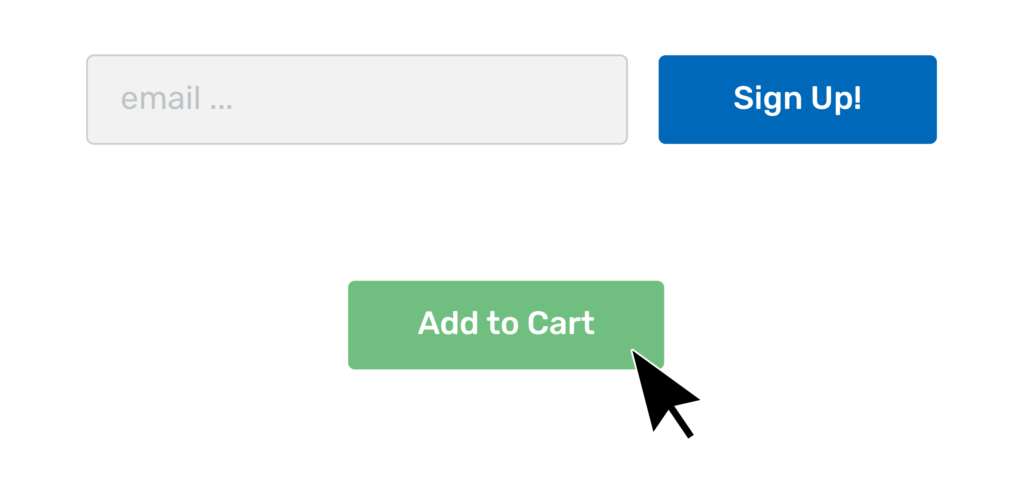
Ad Tracking for Ecommerce Events
Now, we are assuming that you are already tracking all the ecommerce events and values, and have selected as your primary conversion the Purchase action. If that’s not the case, please talk with your developer and come back once you have tracking correctly set up. Smart bidding will not work if Google is not receiving data to learn.
AI Advertising Opportunities to Optimize Conversions
You might have heard about Smart Bidding, a set of automated bid strategies that uses Google AI to optimize conversions. Artificial intelligence helps determine a wide range of signals, such as device, location, time of day and operating system to capture every search context. Google uses these signals to place the right bid at the right time without you having to lift a finger.
Below, you will find out how powerful Smart Bidding is and how it can help us reach each milestone through the conversion journey. But hey, AI can’t do all the work alone. To get the results desired, you have to train the system to learn what signals are the most valuable to your business through high quality inputs, strong strategies, and data analytics.
Conversion Focus Bidding Strategies
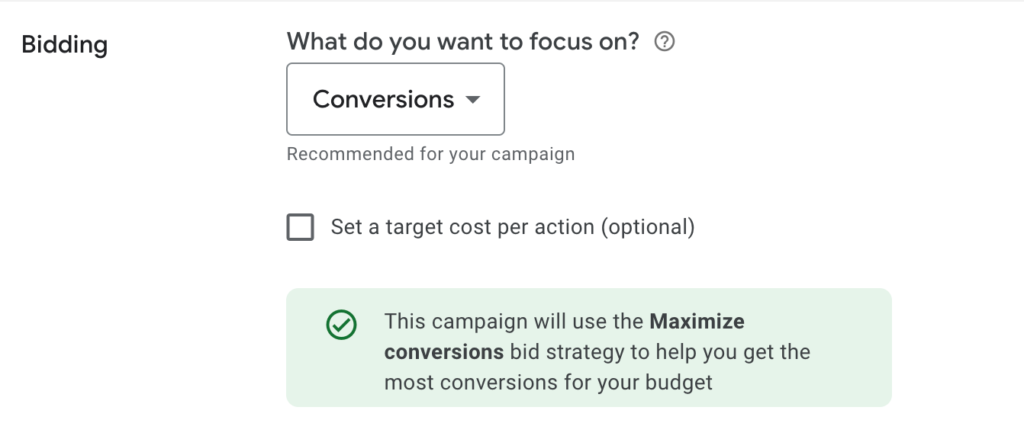
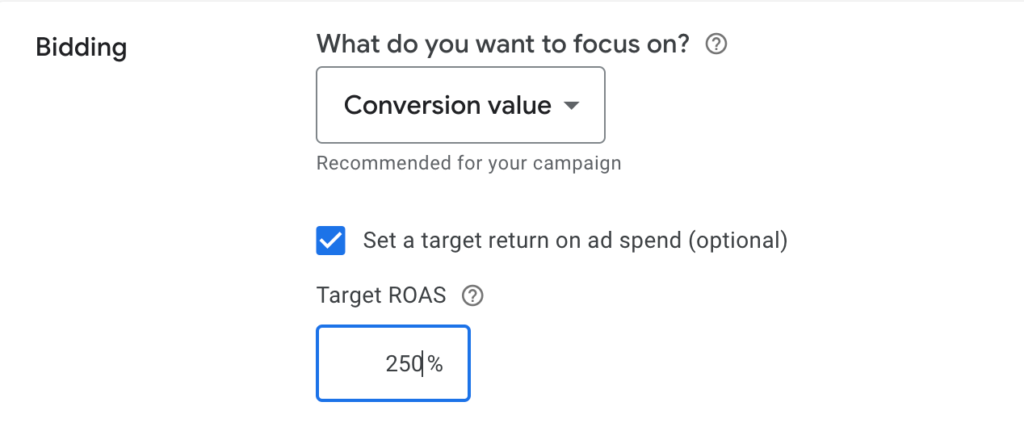
Explore Google bidding strategies with us, and a strategic sequence for maximum impact in your campaigns.
Maximize Conversions: The Recommended Bidding Strategy
Maximize conversions is the recommended bidding strategy to start running a performance-focused campaign. It will help you get the most conversions within your budget while populating campaigns with data. This will allow Google to learn from real time data, finding an optimal bid for your ad each time it can appear.

Maximize conversions is the recommended bidding strategy to start running a performance-focused campaign. It will help you get the most conversions within your budget while populating campaigns with data. This will allow Google to learn from real time data, finding an optimal bid for your ad each time it can appear.
When to use this bid strategy?
- When launching a new campaign with no historical data.
- When your priority is to spend your allocated budget and have no specific ROI target.
- Also, when your conversions have similar conversion values for your business. If you don’t know what conversion value refers to, refer to Conversion Value strategy.
Google’s AI helps tailor bids for every auction to get the cheapest conversions available for your budget. Once your campaign has learned enough, you can lay on historical data from your campaigns to cap your CPA and eventually turn your bid strategy into Target CPA.
Target CPA (Cost Per Action)
As mentioned before, once your maximize conversion campaign has obtained enough conversion data, you can add a bid cap (target CPA) to start guiding the system towards your goals.

A target CPA bid strategy sets bids in real time for us, to get as many conversions as possible within our ideal average cost per conversion. Google uses your historical campaign information and, according to your target cost, it sets a bid based on the likelihood of the ad to convert.
Some helpful tips:
- Note that with this Strategy you may sometimes spend more than your target (and sometimes less) but Google will try to keep your CPA equal to the target you set.
- You also need to know that your average daily budget may spike up to 2 times but don’t worry, it won’t exceed your monthly limit.
- Lastly, set realistic goals when choosing your target CPA, try not to be too restrictive. Pursuing a super low CPA could lead to fewer conversions, as Google would forgo clicks that would have resulted in sales. To check if your target CPA is a realistic target, you can check your actual average CPA. make sure you’ve done all possible optimizations before capping your target.
Once your campaign has obtained enough conversion value data – suggested min 13 conversions in the last 30 days – you can switch to a maximize conversion value strategy, if that’s your goal.
Maximize Conversion Value
First things first – What is Conversion Value and why should you take it into consideration?
When we talk about conversion value on ecomm, we are talking about Revenue. Tracking conversion value helps you measure the true impact of your ad campaign and helps you optimize campaigns towards a ROAS goal.
A Maximize Conversion Value strategy not only looks to get conversions but to get higher revenue from conversions. It maximizes the total conversion value of your campaigns within a specified budget. It helps you understand which are your high-value conversions and optimize your campaigns accordingly. This is the ideal bidding strategy when your priority is to spend the allocated budget and your conversions have different values for your business.
Remember not only will you need to set up conversion tracking but you will also need to assign transaction values to these conversions, so make sure you are capturing revenue.
Last but not least, check on your campaign average daily budget before you switch to maximize conversion value bidding, your ad spend may increase significantly the first few days.
Once your campaign has adapted to this new bid strategy, you can set a target return on ad spend aligned to your goals. Let’s dive deeper into this bidding strategy!
Target ROAS (Return on ad Spend)
You are almost a bidding expert and probably know that with Target ROAS, bids are set to maximize conversion value while trying to achieve your target return on ad spend. As said before, Google’s AI predicts the value of a potential conversion every time a user searches for our products or services.
In other words, if a user is likely to generate a high-value conversion, the bid strategy will bid high on that search, optimizing your bids at auction-time.
Google Ads will try to keep the target ROAS you set but note that some conversions may return a higher ROAS and some others, a lower one.
Before switching to Target ROAS strategy you must know that it’s recommended to have at least 15 conversions in the past 30 days (this may vary depending on the type of campaign).
Also, knowing that Google’s AI uses historical data from, make sure you haven’t made any substantive changes in the last 4 to 6 weeks before applying this bidding strategy.
Lastly, same as with a Target CPA strategy, set realistic goals. Also consider your profit margins. Sometimes, your highest revenue items are not the most profitable ones. Be smart, find a balance.
Trust The Process
If you made it this far, we need to tell you, whether you are starting paid media ads for your business or you are already running a bunch of Google campaigns, trust the process.
If you are new to this, try to follow the journey we suggested before, you will know when to switch to the next step.
If you already have your campaigns running but they don’t have enough historical data or they don’t perform the way you expected, don’t skip steps!
Analyze carefully your business stage, your campaign strategies, your channel mix, your audience and last optimizations before you switch into a bidding strategy that won’t meet your needs.
If you still feel lost between analysis and data, you can reach out to our E-comm experts, who will be happy to help you achieve your goals.
